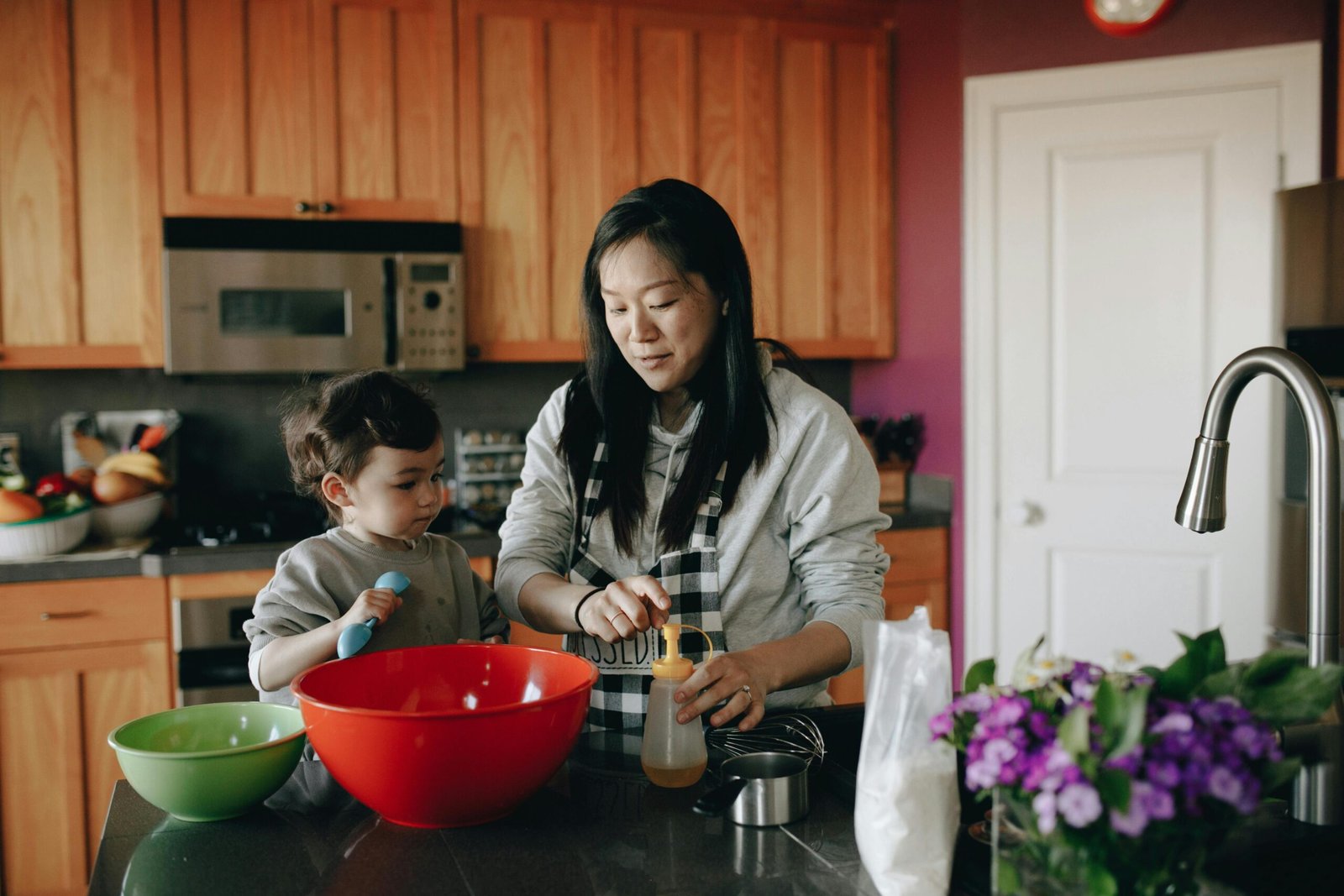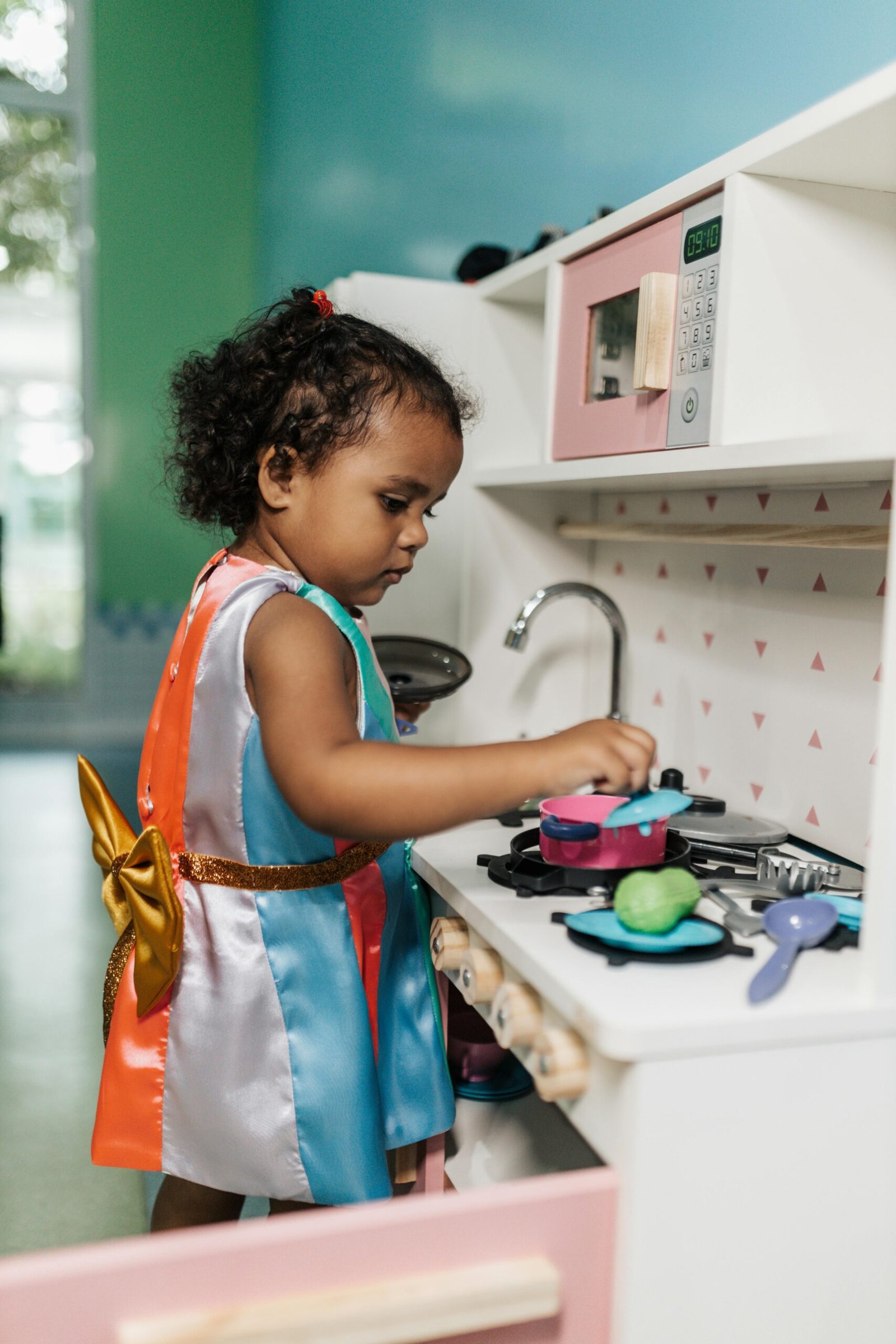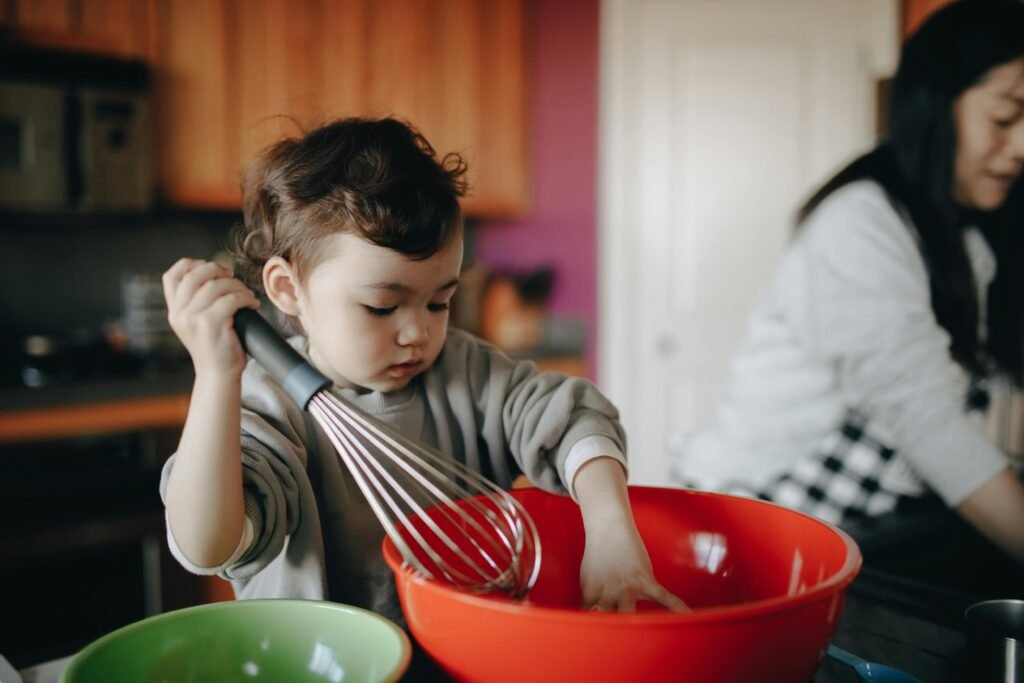Kitchens are full of wonders for little ones, from shiny pots to colorful food packets. But with curiosity comes risk, and your kitchen can quickly become a danger zone for toddlers on the move. This guide will equip you with the know-how to transform your kitchen into a safe haven for your baby, ensuring peace of mind while you cook up family favorites.
Understanding the Importance of a Child-Proof Kitchen
Every year, countless accidents occur within the home, many of them preventable with a bit of foresight. By baby-proofing your kitchen, you’re not just minimizing risks; you’re proactively creating a safer environment where your child can explore without constant worry. Setting up a child-proof kitchen is about anticipating potential hazards and eliminating them before they pose a threat.
The kitchen is a busy place, full of sights, sounds, and smells that naturally attract curious young minds. It’s where sharp objects, open flames, and heavy appliances reside. Understanding the importance of baby-proofing means recognizing these everyday items as possible dangers. By taking steps to mitigate these risks, you not only protect your child but also create a more relaxing space for the whole family.
Knowing the significance of baby-proofing also helps you assess the unique aspects of your own kitchen. Every home is different, from the layout to the types of appliances used. Tailoring your approach to baby-proofing ensures you cover all bases, providing comprehensive protection tailored to your specific needs.

Getting Started with Baby Proofing
Before you start, survey your kitchen like a detective on a mission. Take note of anything that might be tempting or dangerous for a child. This could include reachable countertops, accessible cupboards, or appliances that seem innocuous to adults but are fascinating to children. Begin by observing your kitchen from a child’s eye level, acknowledging potential hazards you might typically overlook.
Gather the tools you need for effective baby-proofing, such as safety locks, corner protectors, and stove guards. These items are readily available online and in stores and are essential in your quest to child-proof your kitchen. Investing in these tools upfront saves time and provides the peace of mind knowing your kitchen is safeguarded against potential accidents.
Once equipped, develop a plan. Prioritize areas that need immediate attention, and work systematically through your kitchen. This strategic approach ensures a thorough evaluation, allowing you to tackle the most pressing issues first and ensuring no area is left unchecked.
Essential Safety Locks and Latches
One of the most effective ways to baby-proof your kitchen is by installing safety locks and latches. These mechanisms prevent children from opening cabinets and drawers, particularly those containing sharp or dangerous items. Safety locks come in various styles, from magnetic to adhesive, each designed for different types of cabinetry.
Installing safety latches on lower cupboards is crucial. These are often home to cleaning supplies, plastic bags, and heavy cookware, all of which pose significant danger to curious little hands. By securing these areas, you’re preventing access and potential mishaps.
Drawers housing knives, scissors, and other sharp objects should also be fitted with robust locks. These safeguards ensure that even if a drawer is opened, its contents remain out of reach, effectively reducing the risk of injury.
Securing Big and Small Appliances
Appliances are the backbone of any kitchen, yet they can also present significant hazards to young children. Securing both large and small appliances is an essential step in baby-proofing. Start with the fridge and oven, which should be outfitted with appliance locks to prevent accidental openings.
Small appliances, such as mixers and toasters, should be unplugged when not in use and stored out of reach. This precaution prevents inquisitive fingers from touching hot surfaces or interacting with electrical components, which can be dangerous.
Additionally, consider using knob covers for stoves. These simple devices make it difficult for children to turn on burners, adding an extra layer of protection against potential fire hazards.
Keeping Dangerous Items Out of Reach
Kitchens are filled with items that, while everyday necessities for cooking, can be hazardous in the hands of a toddler. Ensuring these items are out of reach is a key aspect of child-proofing.
Store knives, scissors, and other sharp objects in high cabinets or use a dedicated knife block with a child-proof cover. For items used daily, consider installing a magnetic strip high up on the wall, keeping blades accessible to adults but beyond the reach of children.
Cleaning supplies should be relocated to higher cabinets or secured with child-proof locks if stored under the sink. Many cleaning products contain chemicals that are harmful if ingested, making it crucial to restrict access entirely.

Safe Storage Solutions
Optimizing storage in your kitchen not only helps maintain order but also contributes significantly to child safety. Utilize upper cabinets for storing hazardous items, ensuring they remain far from tiny hands. This arrangement keeps dangerous objects out of sight and out of mind for your child.
Consider investing in clear storage bins with secure lids for food items and snacks. These bins can be stored at higher levels, reducing temptation and preventing potential spills or misuse of contents.
Another practical solution is the use of lazy Susans and door organizers. These can maximize space in higher cabinets, making it easier to store items away from inquisitive children while still maintaining accessibility for adults.
Creating Safe Zones in the Kitchen
Designating specific areas within your kitchen as ‘safe zones’ can help manage your child’s interaction with this dynamic environment. Safe zones are areas that are free of hazards, where children can explore under supervision without risk.
Establish a play corner with toys and non-breakable kitchen items like plastic bowls and wooden spoons. This gives children their own space to mimic adult activities safely, keeping them entertained and away from potentially dangerous areas.
Eating areas should also be considered safe zones. Ensure that high chairs and dining tables are clear of small, choke-able objects and that chairs are stable and secure for young children.
Implementing Stove and Oven Safety Measures
The stove and oven are among the most dangerous elements in a kitchen for children. Implementing safety measures to keep them safe from harm is essential. Begin by using stove guards, which create a barrier between little hands and hot surfaces.
Always turn pot handles inward while cooking, preventing accidental knocks or pulls. This simple habit can prevent hot spills and burns, significantly reducing the risk of accidents.
Utilize the back burners of your stove whenever possible. This places hot pots and pans further from reach, making it harder for interested children to touch them.
Managing Electrical Hazards
Kitchens are home to numerous electrical outlets, powering everything from appliances to gadgets. Managing these electrical hazards is crucial in making your kitchen safe for children.
Plug covers should be installed to deter curious fingers from exploring electrical outlets. These covers are inexpensive and easy to install, providing effective protection against electrical shocks.
Appliance cords should be neatly bundled and kept out of reach. Hanging cords can easily be pulled, potentially toppling heavy or hot appliances onto a child.
Mastering the Art of Tasting Notes
Understanding tasting notes elevates the coffee experience beyond mere consumption. It invites you to savor each cup, appreciating the intricate flavors and aromas coffee has to offer. This practice can deepen your connection to the coffee you’re enjoying.
Start by observing the aroma of your coffee. Notice the scents that waft up as you pour a fresh cup. Is it fruity, nutty, floral? Each aroma offers clues about the flavors you’re likely to experience.
Take a sip and focus on the initial taste, the body, and the aftertaste. Does it remind you of chocolate, berries, or even spices? Describing these notes helps you appreciate the complexity of coffee and enhances your enjoyment of each brew.
Engaging with the Coffee Community
Joining a coffee community can enrich your coffee drinking experience. Sharing insights, learning from others, and exploring new brews together create a sense of connection and belonging.
Participate in online forums or local coffee clubs where you can discuss your favorite brews, exchange tips, and try new beans recommended by fellow enthusiasts. This interaction can introduce you to different coffee cultures and preparation methods.
Attending coffee-tasting events or workshops is another way to engage with the community. These gatherings provide opportunities to learn from experts, taste a variety of coffees, and expand your coffee knowledge.
Getting the Most Out of Your Subscription
To fully enjoy your coffee subscription, take advantage of the resources and opportunities provided. Engage with the content included in your shipments, such as tasting notes and brewing tips, to enhance your appreciation of each coffee.
Experiment with different brewing methods to discover what best suits your taste. Whether it’s a French press, espresso machine, or cold brew, the method you choose can significantly impact the flavor profile of your coffee.
Share your experiences with others in the coffee community, and don’t hesitate to provide feedback on your subscription service. Your insights can help tailor future shipments to your preferences and improve the overall experience for all subscribers.
Conclusion
Creating a child-proof kitchen requires a combination of strategic planning, practical solutions, and ongoing vigilance. While the task may seem daunting, the peace of mind gained from knowing your little one can explore safely is invaluable.
Remember, baby-proofing is not a one-time task but an ongoing process. Regularly reassess your kitchen’s safety as your child grows, and adjust your measures accordingly. By actively engaging in this process, you’re fostering a secure and nurturing environment where your child can thrive.
For further resources and expert guidance on baby-proofing and child safety, consider reaching out to professionals who specialize in creating safe home environments. Their insights can provide additional peace of mind and ensure that you’re doing everything possible to protect your family.



